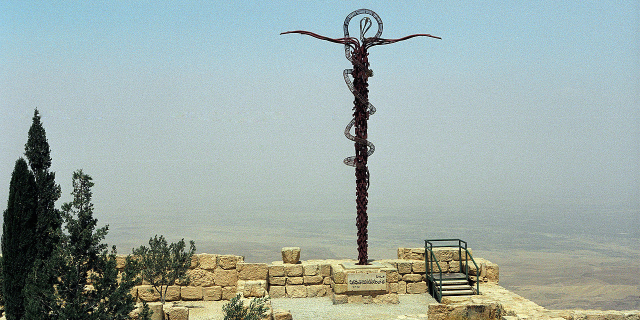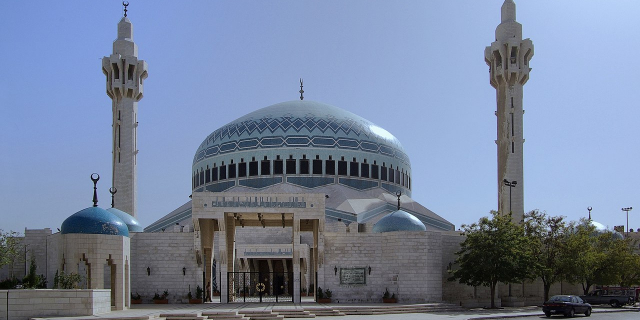Tell el-Hammam (also Tall al-Hammam) is an archaeological site in Jordan, in the eastern part of the lower Jordan Valley close to the mouth of the Jordan River. The site has substantial remains from the Chalcolithic, Early, Intermediate and Middle Bronze Age, and from Iron Age II. There are different attempts at identifying the site with a biblical city.
The site was occupied in the Chalcolithic (c. 4300–3600 BCE), Early Bronze Age (c. 3600–2000 BCE), Middle Bronze Age (c. 2000–1550 BCE), Iron Age II–III (c. 980–332 BCE)[clarification needed],[1] and Hellenistic, Roman, Byzantine, and Umayyad periods (163 BCE–750 CE).[2] The most substantial findings are from the Early Bronze Age, Intermediate Bronze Age, and Middle Bronze Age.[3]
Chalcolithic[clarification needed]
At the bedrock remains of broadhouses were found dating to the Chalcolithic.[citation needed]
Early Bronze Age[clarification needed]
In the Early Bronze Age, Tell el-Hammam was the largest city-state in the Southern Levant.[1]
Early Bronze IThe Early Bronze I (3600-3050) The Chalcolithic broadhouse stone foundations were built over in the Early Bronze I.[citation needed] Apparently, there was continuous occupation from the Chalcolithic into the Early Bronze I.
Early Bronze IIThe Early Bronze II (3050-2650)
Early Bronze IIIThe Early Bronze III (2650-2350) started with a flourishing period that was followed by drier climate from 2500 BC onwards.
Early Bronze IVThe Early Bronze IV (2350-2000) saw the region decline with drought.
Middle Bronze Age Middle Bronze IDuring Middle Bronze Age I (MB I; ~2000–1800 BCE) rainfall was more plentiful, and the level of the Dead Sea rose to about 370 mbsl, at least ~ 50 m higher than its current elevation of 430 mbsl.[4]
Middle Bronze IIThe Middle Bronze II (1800-1550) was the main period for Tell el-Hammam. The city was protected by walls enclosing an area of 85 acres (34 ha) and was divided into an upper and lower city, while the much larger general occupational area around the walled city covered 240 acres (97 ha).[5] It can be compared in size with Hazor (200 acres (81 ha)) and Ashkelon (150 acres (61 ha)), while Jerusalem and Jericho were only 12 and 10 acres (4.9 and 4.0 ha) respectively.[1]
Late BronzeLike most sites in the Jordan Valley, it was vacant in the Late Bronze Age (c. 1550–1200 BCE). Only some Late Bronze pottery was discovered in a tomb,[2] and a single freestanding LB2a structure in Field UA on the upper tell.[6] The "Late Bronze Gap" (first named by Flanagan at Tall Nimrin) of c. 550 years is not unique to Tall al-Hammam but characteristic of many of the sites in the Jordan valley (Hebrew kikkār) region,[dubious ] including Tall Iktanu, Tall Kefrein (al-Kefrayn), Tall Nimrin,[7] Tell el-Musṭāḥ, Tall Bleibel (Bulaybil), etc.[8]
Hellenistic period[clarification needed]
Early Roman, Byzantine, and Early IslamicEarly Roman,[clarification needed] Byzantine, and Early Islamic remains have been excavated between 2005 and 2014. The discoveries included a large Roman bath complex (thermae,[clarification needed] 34.2 m × 40.6 m (112 ft × 133 ft)), aqueduct (165 m (541 ft) exposed), two defensive towers, coins, glass, as well as Roman, Byzantine, and Early Islamic[clarification needed] pottery.[9][10]



























Add new comment